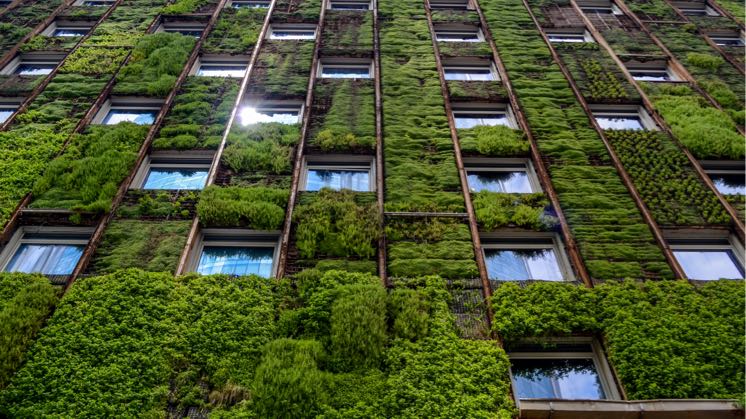A green building is an environmentally sustainable structure that makes efficient use of land, materials, energy, and water, while costing less in terms of maintenance charges. It enhances energy efficiency, limits water consumption, and makes maximum use of recycled, recyclable, and non-toxic materials. The features of green buildings include energy and water efficiency, connection with nature, and sustainability. They offer benefits such as environment protection, low maintenance and operation cost, and better health. Green buildings are certified under systems such as GGBC, GRIHA, and BEE. In India, the market for green buildings is at a nascent stage, with only 5% of buildings being classified as green. However, the Indian green buildings market is expected to double to reach around 10 billion sq ft by 2022.

Features of Green Building
Green buildings, also known as sustainable buildings or eco-friendly buildings, are designed to minimize the impact on the environment and improve the health and well-being of their occupants. Some common features of green buildings include:
- Energy-efficient design: Green buildings use renewable energy sources such as solar power and wind power to reduce energy consumption and greenhouse gas emissions. They are designed to maximize natural light and ventilation, reduce heating and cooling costs, and use energy-efficient appliances and lighting.
- Water conservation: Green buildings incorporate features such as low-flow plumbing fixtures, rainwater harvesting, and water-efficient landscaping to reduce water consumption and conserve resources.
- Use of sustainable materials: Green buildings use environmentally sustainable materials, such as recycled materials, sustainably sourced wood, and non-toxic, low-emitting building materials, to minimize the environmental impact of construction.
- Indoor air quality: Green buildings are designed to improve indoor air quality, with features such as proper ventilation, air filtration systems, and the use of non-toxic building materials to reduce the amount of indoor pollutants.
- Waste reduction: Green buildings incorporate features such as composting, recycling, and waste reduction programs to minimize the amount of waste generated by the building and its occupants.
- Green roofs and walls: Some green buildings incorporate green roofs and walls to provide insulation, reduce heat island effects, and improve air quality.
Overall, green buildings prioritize sustainability and aim to reduce the environmental impact of buildings while improving the health and well-being of their occupants.





